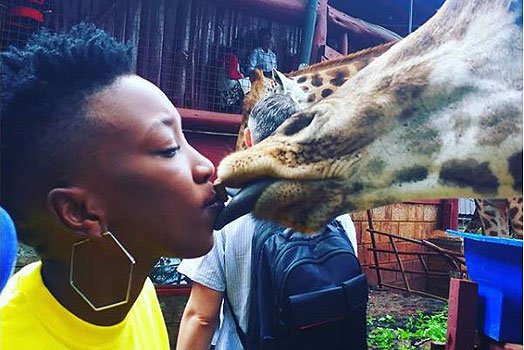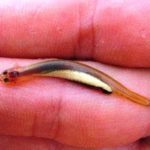A new study concludes that half of human cultures do not practice romantic kiss lip with lip. Animals do not tend to bother about it either. So, how did it evolve?

When you think about it, the kiss is a strange and a little dirty act. You share saliva with someone, sometimes for long periods of time.
It is estimated that a kiss could transfer up to 80 million bacteria, not all of them good.
However, everyone definitely remembers their first kiss, with all its embarrassing or delicious details, and the kiss continues to play an important role in each new love story.
At least, it does in some societies. People in Western societies may assume that the romantic kiss is a universal human behavior, but a new analysis suggests that less than half of all cultures do so.
The kiss is also extremely exceptional in the animal kingdom.
So, what is really behind this strange behavior? If it is useful, why not all animals – as well as all human beings? It turns out that the very fact that most animals do not kiss helps explain why some do.
According to a new study on kissing preferences, which analyzed 168 cultures from around the world, only 46% of cultures kiss in a romantic sense.
Previous estimates had put the figure at 90%. The new study excludes the kiss of parents to their children, and focuses exclusively on the romantic action lip with a partner’s lip.
Many groups of hunter-gatherers showed no evidence of the kiss or desire to do so. Some even considered it to disgust. The Mehinaku tribe in Brazil, in fact, said it was “disgusting”.
Human beings have lived as hunter-gatherer groups for most of our existence, until the invention of agriculture about 10,000 years ago.
If modern groups of hunter-gatherers do not practice romantic kissing, it is possible that our ancestors did not either.
However, we cannot be sure of this, since modern groups of hunter-gatherers do not live in the same way as ancestral hunter-gatherers, because their societies have changed and adapted over time.
In any case, the study revokes the belief that romantic kissing is a quasi-universal human behavior, says lead author William Jankowiak of the University of Nevada in Las Vegas. Instead, it seems to be a product of Western societies, passed on from one generation to the next, he says.
There is some historical evidence to support that.
The kiss, as we do today, seems to be a fairly recent invention, says Rafael Wlodarski of the University of Oxford in the United Kingdom. I have tracked numerous records to find evidence of how the kiss has changed.
The oldest evidence of kiss-related behavior comes from the Hindu texts in Vedic Sanskrit more than 3,500 years ago. The kiss was described as the inhalation of the soul from one another.
On the contrary, the Egyptian hieroglyphics show people close to each other instead of pressing their lips.
So, what happens? Is the kiss something we have naturally, but that some cultures have suppressed? Or is it something modern humans have invented?
We can find a better understanding by observing the animals.
Our closest relatives, the chimpanzees and the bonobos, kiss. Primatologist Frans de Waal, of Emory University in Atlanta, Georgia, has seen many cases of chimpanzees kissing and hugging each other after a conflict.
For chimpanzees, the kiss is a form of reconciliation. It is more common in evils than in females. In other words, it is not a behavior for romantic purposes.
Their cousins the bonobos kiss more frequently, and often use the tongue in doing so. That is perhaps not surprising, since the bonobos are highly sexual beings.
When two human beings meet, they probably shake hands. Bonobos have sex: the so-called bonobo handshake. They also use sex for many other types of union. So their kisses are not particularly romantic, either.
These two apes are exceptions. As far as we know, the rest of the animals do not kiss at all. They may not touch their faces to each other, but even those with lips do not share saliva or gesticulate and unite their lips. They do not need to do it.
Take the boars. Males produces an acrid odor that females find extremely attractive. The key chemical component is a pheromone called androstenone that triggers the desire of the females to mate.
From the point of view of the female it is a good thing, since the evils with the highest amount of androstonene are also the most fertile. His sense of smell is so sharp that he has not got enough to kiss the male.
The same goes for many other mammals. For example, female hamsters emit pheromone that excites males tremendously.
The mice use similar chemistry to help them find a genetically different partner, which minimizes the risk of accidental incest.
Animals often release these pheromones in the urine. “Your urine is much more penetrating,” says Wlodarski. “If there is a present in the environment that can assess compatibility through it.”
It is not only mammals who have a great sense of smell. A spider, the male black widow can smell the pheromones produced by a female that tell him if she has eaten recently. To minimize the risk of being eaten, you will only mate with her if you are not hungry.
The thing is that animals do not need to get close to each other to smell a good potential mate.
On the other hand, human beings have a horrible sense of smell, so we are benefiting from getting closer. While odor is not the only signal we use to assess the physical state of the other, studies have shown that it plays an important role in choosing a partner.
A study published in 1995 showed that women, prefer the smell of men who are genetically different from them. This makes sense, since mating with someone with different genes is more likely to produce healthy offspring. The kiss is a great way to get close enough to sniff out the couple’s genes.
In 2013, Wlodarski examined kissing preferences in detail. I asked several hundred people what was most important to them when they kissed someone. The smell turned out to be a very important factor, and its importance increased significantly when women were more fertile.
It turns out that men also produces a version of the pheromone that females of wild boar find attractive. It is present in male sweat, and when women are exposed to it their levels of arousal increase slightly.
Pheromones are an important part of how mammals choose mate, says Wlodarski, and we share some of them. “We have inherited all of our biology from mammals, we have simply added extra elements throughout evolution.”
From that point of view, the kiss is just a culturally acceptable way to get close enough to the other person to detect their pheromones.
In some cultures, this behavior of sniffing the other became physical lip contact. It is difficult to determine when this happened, but both have the same purpose, says Wlodarski.
So if you want to find your better half, you can give up kissing and start sniffing people in turn. You will find an equally good couple, and you will not receive half of the germs. Mind you, get ready for some weird looks.














